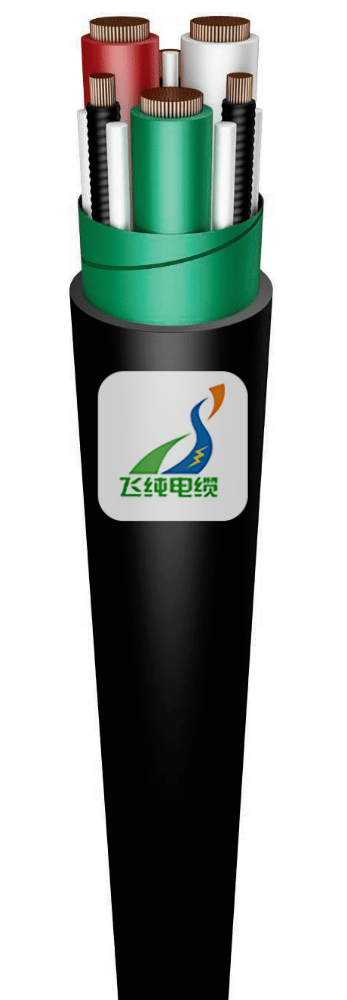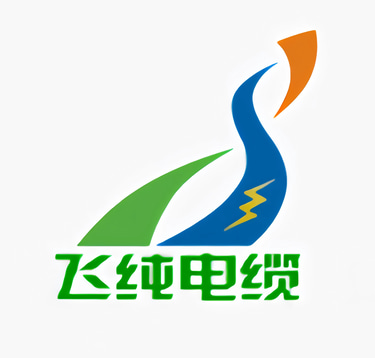Type OnG 0.6/1 kV 4 and 5-core mining power cables
4 and 5-core Rubber insulated and sheathed power cables for mobile and portable mining receivers, multi-core unscreened for a rated voltage of 0.6/1kV


Overview
These cables are designed for mobile and portable mining equipment. They are unscreened, multi-core power cables with a rubber insulation and an outer rubber sheath, rated for a nominal voltage of 0.6/1 kV. They come in two versions:
4‑core cables: Containing three “working” conductors plus one protective (earth) conductor.
5‑core cables: Containing three working conductors, one protective conductor, and one auxiliary conductor.
The cables conform to Polish standards (PN-89/E-90143 and PN-89/E-90140).
Construction Details
Conductors:
Made of multi-stranded, galvanized copper (class 5c as per PN-88/E-90160).
Insulation and Separator:
Each conductor is insulated with a type of rubber (designated IZ rubber) in accordance with PN-89/E-29100.
A polyester film separator is used between the working conductors.
Color Coding:
For 4‑core cables:
Protective conductor: Corrugated black
Working conductors: Green, red, and natural (uncolored)
For 5‑core cables:
Protective conductor: Corrugated black (or provided as an additional black layer)
Working conductors: Green, red, and natural
Auxiliary conductor: Brown
Additional Layers:
An interlayer (or “filler”) made from the same IZ rubber is applied.
The outer sheath (“opona”) is produced from either ON4 or ON3 type rubber (per PN-89/E-29100) and is black in color.
Cable Marking and Nomenclature
OnG stands for “przewód oponowy górniczy” – meaning it is a mining cable with a rubber (“opona”) sheath.
The designation indicates:
Conductor: Made of copper with standard rubber insulation.
Sheath: Made from mechanically robust, oil-resistant, oxygen-aging–resistant, and non-flammable rubber.
Construction: The individual conductors are twisted together, typically around an interlayer or a central core.
For example: An OnG cable might be marked as “OnG 5‑ci żyłowy” with three working conductors, one protective conductor, and one auxiliary conductor, each with a rated cross-sectional area (e.g., 4 mm²).
Key Characteristics
Operating Temperature:
Maximum operating temperature is +60 °C.
Bending Radius:
For fixed installations: Minimum bending radius is 6 times the overall cable diameter (6D).
For mobile applications: Minimum bending radius is 10 times the cable diameter (10D).
Test Voltages:
Working conductors are tested at 3.2 kV.
Auxiliary conductors (where applicable) at 2 kV.
Packaging:
Typically delivered on drums.
Additional Construction Notes
In 4‑core cables, the protective conductor’s insulation thickness is the same as that of the working conductors.
Core Composition:
4‑core cable: Consists of three working conductors plus one protective conductor twisted together over the interlayer.
5‑core cable: Consists of three working conductors plus one auxiliary conductor twisted together over the interlayer, with the protective conductor serving as the central core.
Typical Dimensions and Variants
The cables are available in various sizes (for example, with working conductor cross-sectional areas of 2.5, 4, 6, or 10 mm²). For each size, manufacturers specify:
Nominal insulation thickness (in mm) for the working (and, where applicable, auxiliary) conductors.
Nominal thickness of the outer sheath.
The maximum allowable overall cable diameter.
An approximate weight per kilometer.
For instance: A 4‑core cable with 2.5 mm² working conductors might have an insulation thickness of about 2.5 mm and an outer sheath thickness of around 1.0 mm, with a maximum overall diameter of approximately 3.2 mm and a weight near 450 kg per km.
Electrical Parameters
For cables of different sizes, key electrical characteristics include:
For a 2.5 mm² working conductor:
Resistance: ~8.21 Ω/km
Continuous current rating: 31 A
Inductance: ~0.39 mH/km
Inductive reactance: ~0.123 Ω/km
For a 4 mm² working conductor:
Resistance: ~5.09 Ω/km
Continuous current rating: 42 A
Inductance: ~0.37 mH/km
Inductive reactance: ~0.016 Ω/km
For a 6 mm² working conductor:
Resistance: ~3.39 Ω/km
Continuous current rating: 54 A
Inductance: ~0.34 mH/km
Inductive reactance: ~0.107 Ω/km
For a 10 mm² working conductor:
Resistance: ~1.95 Ω/km
Continuous current rating: 75 A
Inductance: ~0.34 mH/km
Inductive reactance: ~0.107 Ω/km
Applications
These cables are primarily used to connect mobile and portable mining devices, ensuring safe and reliable power distribution in demanding mining environments.

Q1: What are the Type OnG 0.6/1 kV cables designed for?
A: They are engineered for mobile and portable mining receivers and equipment, ensuring reliable power delivery in harsh mining environments.
Q2: What is the voltage rating of these cables?
A: They are rated for a nominal voltage of 0.6/1 kV, making them suitable for typical mining electrical systems.
Q3: What configurations are available?
A: The cables are available in two versions:
4-core: Three working conductors plus one protective (earth) conductor.
5-core: Three working conductors, one protective conductor, and one auxiliary conductor.
Q4: What type of conductors are used in the cable construction?
A: The conductors are made from multi-stranded, galvanized copper (class 5c), ensuring high conductivity and durability as per the PN-88/E-90160 standard.
Q5: How are the insulation and sheath designed?
A:
Insulation: Each conductor is insulated with IZ rubber following PN-89/E-29100, providing excellent electrical and environmental protection.
Sheath (Opona): The outer layer is made from ON4 or ON3 type rubber, offering enhanced mechanical strength, oil resistance, and non-flammability.
Q6: What color codes are used for the cable conductors?
A:
For 4‑core cables:
Protective conductor: Corrugated black.
Working conductors: Green, red, and natural (uncolored).
For 5‑core cables:
Protective conductor: Corrugated black (or a black interlayer).
Working conductors: Green, red, and natural.
Auxiliary conductor: Brown.
Q7: What operating temperature can these cables handle?
A: They are rated for a maximum operating temperature of +60 °C, which is suitable for the often elevated temperatures encountered in mining operations.
Q8: What are the bending radius requirements?
A:
Fixed installations: A minimum bending radius of 6 times the overall cable diameter (6D) is recommended.
Mobile applications: A minimum bending radius of 10 times the overall cable diameter (10D) is required, ensuring flexibility during movement.
Q9: How do the cables ensure electrical safety?
A: They meet rigorous testing standards with working conductors tested at 3.2 kV and auxiliary conductors at 2 kV. The robust insulation and sheath design provide long-term durability and reduce risks in demanding mining environments.
Q10: What are the key electrical parameters of these cables?
A: Parameters vary by conductor size. For example:
A 2.5 mm² working conductor has a resistance of approximately 8.21 Ω/km and a continuous current rating of 31 A.
A 10 mm² working conductor exhibits about 1.95 Ω/km resistance and can handle around 75 A.
These specifications ensure efficient power transmission over various lengths.
Q11: How are these cables typically packaged?
A: They are generally delivered on drums, which facilitates easy handling and installation in remote or mobile mining settings.
Q12: How does the cable design contribute to operational safety in mining?
A: The combination of high-quality rubber insulation, a mechanically robust and oil-resistant sheath, and the secure arrangement of conductors minimizes the risk of electrical failures, even under the severe conditions common in mining environments.
Q13: Can these cables be used for both fixed and mobile mining applications?
A: Yes. Their flexible design, robust construction, and compliance with stringent standards make them ideal for both fixed installations and mobile mining operations.






Type OnG 0.6/1 kV 4 and 5-core mining power cables
Type OnG 0.6/1 kV cables are specifically designed for use in mobile and portable mining applications. They come in two configurations: a 4‑core version, which includes three working conductors and one protective earth conductor, and a 5‑core version that adds an auxiliary conductor for extra functionality. These cables are built with multi-stranded, galvanized copper conductors that are insulated with a robust IZ rubber, ensuring excellent electrical performance and long-term durability. A polyester film separator is used to maintain the arrangement of the conductors. The entire assembly is then covered with a tough rubber sheath (made from either ON4 or ON3 rubber) that is oil-resistant, non-flammable, and designed to withstand harsh mining environments. Color coding is standardized for easy installation: for 4‑core cables, the working conductors are green, red, and natural, while the protective conductor is a corrugated black. In the 5‑core version, the additional auxiliary conductor is brown. These cables are rated for a nominal voltage of 0.6/1 kV and can operate at temperatures up to +60 °C. They also comply with strict bending radius requirements—6 times the cable diameter for fixed installations and 10 times for mobile applications—ensuring flexibility and safety during installation and operation. Overall, these cables offer reliable, safe, and efficient power transmission for mining equipment, making them an ideal solution in challenging and demanding mining environments.
6/30/20215 min read
